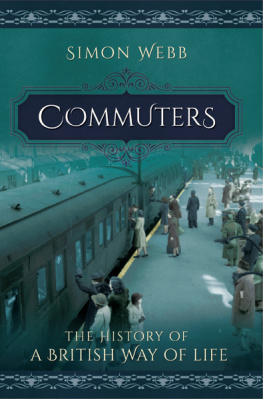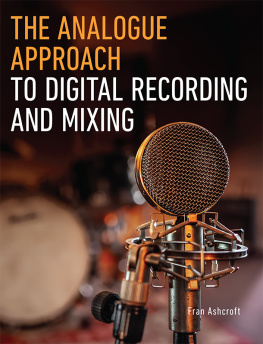The Analogue Revolution
The Analogue Revolution
Communication Technology 1901 1914
Simon Webb
First published in Great Britain in 2018 by
Pen & Sword History
An imprint of
Pen & Sword Books Ltd
Yorkshire - Philadelphia
Copyright Simon Webb, 2018
ISBN 978 1 52671 537 1
eISBN 978 1 52671 539 5
Mobi ISBN 978 1 52671 538 8
The right of Simon Webb to be identified as Author of this work has been asserted by him in accordance with the Copyright, Designs and Patents Act 1988.
A CIP catalogue record for this book is
available from the British Library.
All rights reserved. No part of this book may be reproduced or transmitted in any form or by any means, electronic or mechanical including photocopying, recording or by any information storage and retrieval system, without permission from the Publisher in writing.
Pen & Sword Books Ltd incorporates the Imprints of Pen & Sword Books Archaeology, Atlas, Aviation, Battleground, Discovery, Family History, History, Maritime, Military, Naval, Politics, Railways, Select, Transport, True Crime, Fiction, Frontline Books, Leo Cooper, Praetorian Press, Seaforth Publishing, Wharncliffe and White Owl.
For a complete list of Pen & Sword titles please contact
PEN & SWORD BOOKS LIMITED
47 Church Street, Barnsley, South Yorkshire, S70 2AS, England
E-mail:
Website: www.pen-and-sword.co.uk
or
PEN AND SWORD BOOKS
1950 Lawrence Rd, Havertown, PA 19083, USA
E-mail:
Website: www.penandswordbooks.com
List of Plates
The photophone.
Patent design for the telegraphone.
Edwardian Britain as it is now remembered.
The Code of Hammurabi.
An early printing press.
A steam rotary press at the Times .
A hand-coloured stereoscopic Daguerreotype.
The keyboard of a Linotype printing press.
The storming of the Winter Palace. Fake news from over a century ago.
A formal portrait from Victorian Britain.
The Brownie after whom the Box Brownie was named.
Autochrome photograph of Mark Twain.
The first picture postcard printed in Britain.
A postcard showing the iconic horn of an early phonograph.
A humorous picture postcard from 1907.
A brief message referring to the picture shown in Illustration 14.
A typewriting operative.
A telephone exchange at the turn of the century.
An instant camera which delivers prints within a minute from before the First World War.
A Photostat machine from 1912.
Introduction
I n the last thirty years or so there have been great changes in the way that information is stored and retrieved, and also in the methods by which people communicate with each other. These changes, which began in the industrialized nations of the Western World, have manifested themselves in the ubiquitous appearance of mobile telephones in public places and the universal presence of small, powerful computers in shops, offices, schools and homes. This upheaval in information technology is sometimes called the Digital Revolution or the beginning of the Information Age.
A little over a century ago, a similar transformation took place in the way that information of all kinds was handled and sent from one place to another. Just as during the modern Digital Revolution, the way that images, text, speech and music were recorded and then forwarded to other people underwent a sea change, as did the speed with which communications took place. It was plain to those caught up in this earlier technological revolution that the world had somehow shrunk and that things would never be the same again. Somebody in London could now speak to another person, hundreds of miles away, without even leaving his or her home. Photographs could also be sent from one country to another at the speed of light. The formalities of Victorian letter-writing were dispensed with and a new mode of exchanging text messages evolved; one which entailed arranging to meet later that day by simply a few abbreviated phrases, much as we now use emails, texts and instant messaging services. These simple text messages frequently featured amusing or eye-catching images, just as memes are now spread via social media. Moving images of events around the world could now be viewed by ordinary people within days, or even hours, of their taking place. Most excitingly of all, the various rapid advances in information technology were being combined in strange and wholly unexpected ways. Each day seemed to bring forth new instances of this trend. In our own time, we have seen something similar; a convergence in digital information processing, leading to startling and unlooked-for developments.
At the beginning of the twenty-first century, mobile telephones were used for calling people, photographs were taken with cameras and MP3 players were used to listen to music, while those wishing to send an email were usually obliged to wait until they got home and could use a computer. Today, almost everybody carries around a miniature computer which can record films, play music and provide instant access to that vast collection of computers known as the Internet. One can also, of course, make telephone calls with it. Precisely the same thing happened in Britain during the first fifteen years of the twentieth century, as one innovation was harnessed to another, with astonishing results.
Some of the worlds first radio broadcasts of speech and music were made in 1906 and 1907, with music provided by gramophone records . A novel combination of two new media led to a completely new experience for people in their homes. A few years later, there was an even more intriguing example of this sort of thing when, on 21 April 1913, King George V crossed the English Channel on the Royal Yacht on his way to Paris. As he disembarked at Calais, an aeroplane flew overhead, filming the scene for a newsreel company. The plane travelled straight to Hendon aerodrome on the outskirts of London, from where the canister containing the film was rushed to a laboratory to be developed. At 5.20 pm that same day, audiences at the London Coliseum were able to view events which had taken place on the other side of the Channel a matter of hours earlier.
We sometimes forget how much of our Digital Revolution is founded upon ideas and technical devices which were first developed during the Edwardian Era. The Internet, for example, relies upon a vast and intricate network of fibre-optic cables, many of them laid beneath the sea, to carry information to and from our computers and mobiles. These cables operate by means of pulses of light which carry telephone calls, texts, emails, music, films and a thousand-and-one other things from one end of the Earth to the other. It all sounds very advanced and ultra-modern and yet the basic principles behind the system were being exploited well over a century ago.
As early as June 1880 Alexander Graham Bell, inventor of the telephone, demonstrated the wireless transmission of speech by means of a modulated beam of light. He believed this invention to be even more important than the telephone which he had patented a few years earlier. An early version of Bells Photophone, which shows speech being transmitted along a beam of light, may be seen in Illustration 1. Others working in this field at the time called this the radiophone. Today, we use the light from lasers to send the telephone calls, television programmes and other things along the fibre-optic cables, but of course there were no lasers in those days. In the opening years of the twentieth century, the most powerful light sources were carbon arc lamps and using these, it was found possible to send telephone messages for five miles or more.













